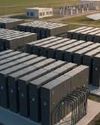Bioenergy and its potential to reduce carbon emissions
EPR Magazine (Electrical & Power Review)
|November 2024
Bioenergy is a renewable energy source derived from organic materials biomass), including plants, agricultural residues, forestry by-products, and organic waste. It can be converted into energy through combustion, gasification, anaerobic digestion, and fermentation, serving multiple purposes such as heating, electricity generation, and transportation fuels. As the world seeks to transition from fossil fuels, bioenergy offers a consistent, sustainable energy source that complements intermittent renewables like solar and wind.
-

The escalating concentration of greenhouse gases (GHGs), primarily carbon dioxide (CO2), drives global warming and climate change. This phenomenon, largely caused by fossil fuel combustion, has far-reaching impacts, including severe weather patterns, sea-level rise, and biodiversity loss. As nations worldwide grapple with these consequences, the need for low-carbon, renewable energy sources becomes increasingly urgent. Bioenergy, with its ability to utilize biomass-a resource that can be quickly replenished-presents a promising alternative to fossil fuels. This case study examines bioenergy's potential in reducing carbon emissions, detailing its sources, conversion technologies, and role in achieving climate goals.
Bioenergy Sources and Types
Bioenergy relies on various organic materials, collectively known as biomass, derived from plant, animal, or microbial sources. Unlike fossil fuels, which take millions of years to form, biomass can be regenerated relatively quickly through natural or agricultural processes. Key types of bioenergy include Biofuels and Biomass.
Biofuels
Biofuels are categorized into liquid and gaseous forms, each with specific transportation, heating, and electricity generation uses.
Liquid Biofuels:
Ethanol is produced by fermenting sugars and starches from crops like corn and sugarcane. Used primarily in transportation, ethanol is often blended with gasoline to reduce emissions and improve fuel efficiency.
Biodiesel, made from vegetable oils, animal fats, or recycled cooking grease, is a renewable alternative to traditional diesel. It can be used directly in diesel engines or blended with petroleum-based diesel.
Bu hikaye EPR Magazine (Electrical & Power Review) dergisinin November 2024 baskısından alınmıştır.
Binlerce özenle seçilmiş premium hikayeye ve 9.000'den fazla dergi ve gazeteye erişmek için Magzter GOLD'a abone olun.
Zaten abone misiniz? Oturum aç
EPR Magazine (Electrical & Power Review)'den DAHA FAZLA HİKAYE

EPR Magazine (Electrical & Power Review)
Wirepas certification a major step toward India's upcoming phase of AMI deployments
The Wirepas Certified programme is a major advancement for India's massive AMI deployments. This affirms device suitability for the diverse and challenging environments in the country. Teppo Hemiä, CEO of Wirepas discusses more with EPR.
2 mins
December 2025

EPR Magazine (Electrical & Power Review)
BESS becoming the backbone of power capacity additions
India is undergoing a rapid clean energy revolution, aiming to deploy 500 GW of non-fossil capacity by 2030, of which it has already reached 250 GW.
6 mins
December 2025

EPR Magazine (Electrical & Power Review)
Transformer industry undergoes evolution to meet capacity addition
The projected increase of over 433,000 MVA in substation capacity nationwide has served as a guiding force for the transformer sector. Amit Varshney shares his expertise in talks with EPR.
3 mins
December 2025

EPR Magazine (Electrical & Power Review)
RenewSys elevates solar module reliability with advanced encapsulant technologies
To enhance the efficiency and reliability of its products, RenewSys has introduced advanced encapsulants and backsheets, including AA EVA (Anti-Acid) to combat internal corrosion, ENT POE to guarantee PID-free performance, and environmentally friendly options like the Green Backsheet.
2 mins
December 2025
EPR Magazine (Electrical & Power Review)
REC facilitates MoU between MePDCL and CPRI for quality testing in Meghalaya
REC Limited, a Maharatna Public Sector Enterprise under the Ministry of Power and a leading NBFC, has successfully mediated a crucial Memorandum of Understanding (MoU) between Meghalaya Power Distribution Corporation Limited (MePDCL) and the Central Power Research Institute (CPRI).
1 min
December 2025

EPR Magazine (Electrical & Power Review)
SECI, Andhra finalise 1200 MWh BESS and 50 MW hybrid project
Solar Energy Corporation of India Limited (SECI), a Navratna CPSU under the Ministry of New & Renewable Energy (MNRE), Government of India, has exchanged Government Orders (GOs) with the Government of Andhra Pradesh for the development of a 1200 MWh Battery Energy Storage System (BESS) at Nandyal and a 50 MW Hybrid Solar Project.
1 min
December 2025

EPR Magazine (Electrical & Power Review)
Convergence of digitalisation, automation, and electrification is the foundation of next-gen infra
Panasonic Life Solutions India is on a mission to contribute to reliable, sustainable electrification across various sectors in the country. Shahab Naqvi shares insights about the company's strategies in talks with EPR. Let us know more from him.
3 mins
December 2025

EPR Magazine (Electrical & Power Review)
FY26 to attract $20-25 bn in renewable investments in India
The renewable energy sector in India has just hit a turning point. Between April and August 2025, the country added a record 20.1 gigawatts (GW) of renewable power capacity, a 123 per cent increase compared to the same period last year, when additions totalled just 9 GW. According to data from the Ministry of New and Renewable Energy (MNRE) and market observers like ICRA, this pace positions India to cross 35 GW of new capacity by the end of FY26, the highest annual addition in its clean-energy history.
3 mins
December 2025

EPR Magazine (Electrical & Power Review)
Wirepas certification a major step toward India's upcoming phase of AMI deployments
This certification provides DISCOMs and AMISPs with confidence that a device has passed the toughest real-world tests for scalability, interoperability and reliability.
2 mins
December 2025

EPR Magazine (Electrical & Power Review)
Renewable surge strains the grid as storage strengthens stability
The CEA mandates co-located ESS (approx. 2 hours) for new solar projects, aiming to reach 60 GW of storage by FY 2032 (including 42 GW of BESS and 19 GW of pumped hydro).
3 mins
December 2025
Listen
Translate
Change font size

